Family Friendly Rally Cars: The 2012 Ford Focus & 2012 Subaru Impreza Hatchbacks
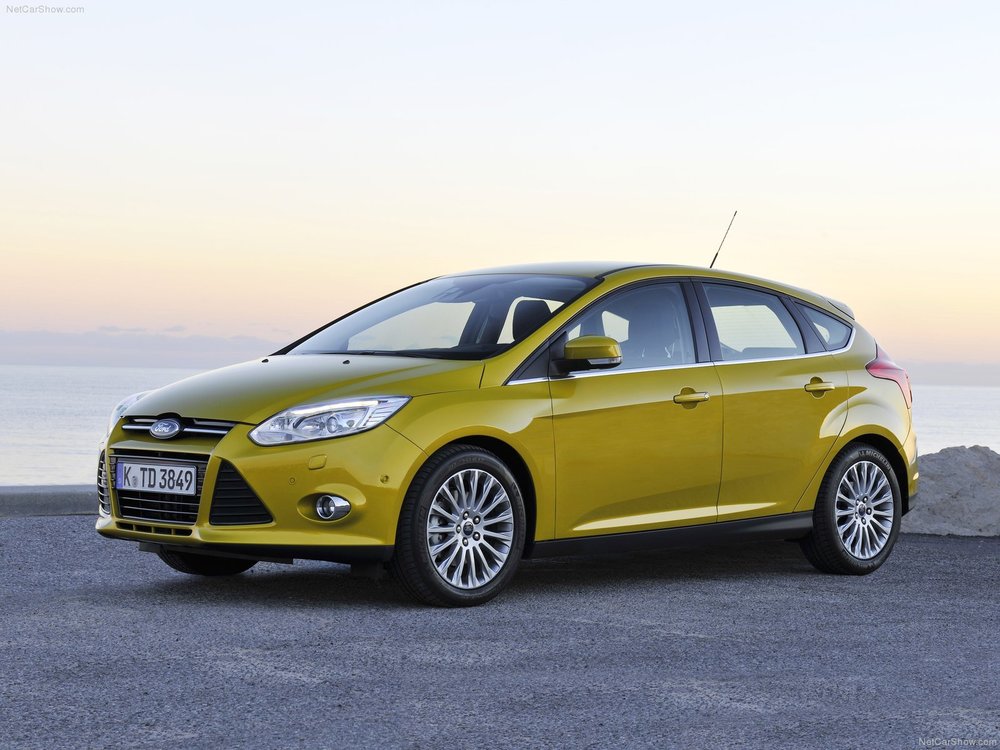
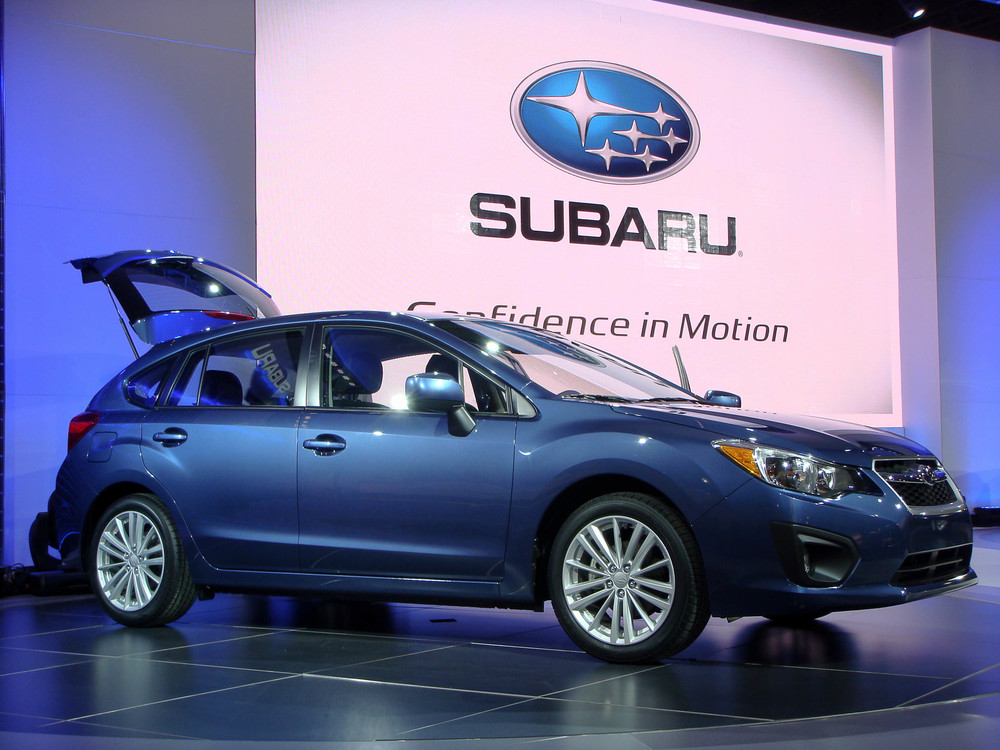

Perhaps I should go easy on the third generation Ford Focus. It might not be as family friendly as the fourth generation Subaru Impreza. With its tiny back seat and swooping, mobile phone like center stack, it is the sporitiest Focus yet.
But I should back up a bit. What do I mean by "rally car?" There are a few requirements that separate a genteel, front wheel drive hatchback from one that shares its chassis with race cars. So here goes.
First of all, rally cars are based on road cars, not the other way around. Rally cars are a stroke of worldwide marketing genius. Take a car -a small hatchback that might be the first car of a young couple- strengthen the chassis, lighten the car, increase the power and ground clearance, and go racing in dangerous environments -on asphalt, gravel, and dirt. Under the contemporary rally car standards, there are minimal requirements for a car that can be converted into a rally racer. It must have a four cyllinder engine. It should weigh under 3,000 pounds before modification. Ideally, it should have a wide stance, with a low center of gravity. And also ideally, it should have rear wheels pushed as close to the corners as possible.
The car that successfully linked the sport of rally racing, manufacturers, and automobile marketing was the 1968 Ford Escort Mk I, which won what becme the WRC in 1970. It was a rear wheel drive car with a V6, but that would change as both the sport and the industry changed. Just 14 years later, the Escort driven worldwide would be front wheel drive, and would set a long standing record as the best selling car worldwide for several years. It would be accompanied by cars such as the Audi Quattro, Peugeot 200 series, Toyota Corolla and Celica, Subaru Impreza, Citroen models, and the Mitsubishi Lancer.
In 1998, the Escort was repaced by the Focus, and Ford kicked things into high gear. Customers had more choices of body styles and engines. But there was a catch. Like the Escort before it, there was an international version, and a slightly less agile and exciting North American version. A combination of customer demand and economic conditions prompted Ford to synchonize and globalize most of their products. Ford sent the US market a few international products over the years, notably the Freestyle crossover wagon. Ford fans will remember that some things would never be globalized, such as the muscle cars for the Australian market, the Falcon coupe and sedan. But Fors has been able to globalize its most popular products: the subcompact Fiesta, the compact Focus, the midsize Mondeo (Fusion), and soon, the C-Max minivan, and next generation Kuga (Escape). That's five global models under the "One Ford" banner.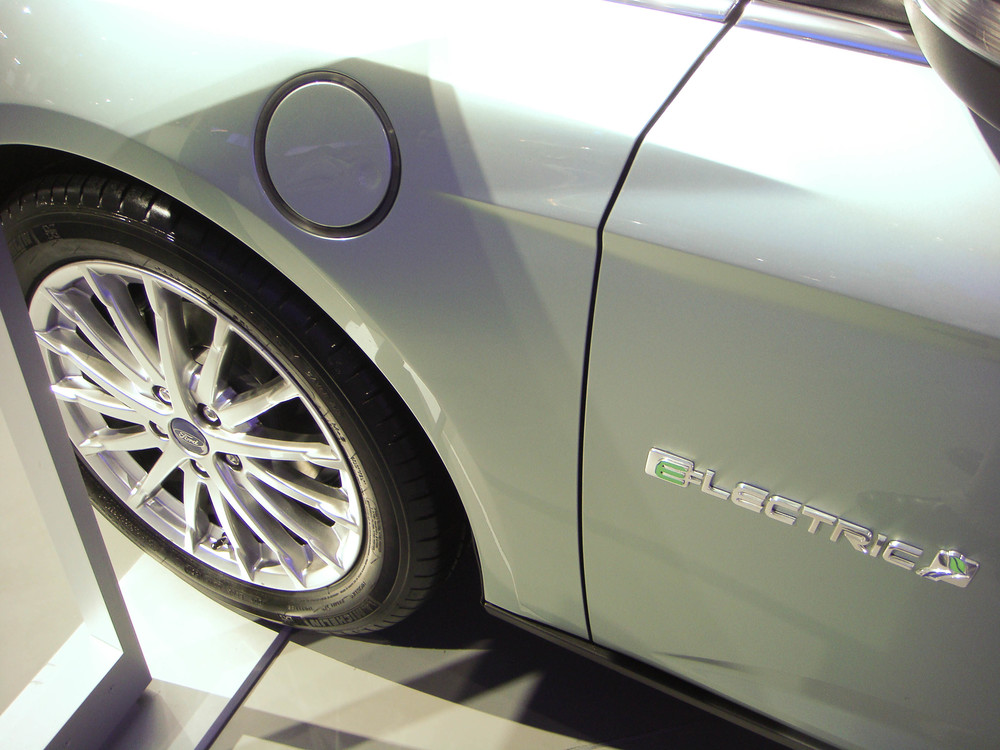
Ford has not only embraced the economic practicality of global platform integration and manufacturing, but it has also embraced the reality of peak oil. If Ford keeps its promises, over half of its new cars sold will be fully electric in 20 years. A way off, but if that holds it will be a significant shift. And Ford is putting its money where its mouth is, with plans to offer EV versions of the Fiesta and Focus in North America over the next few months.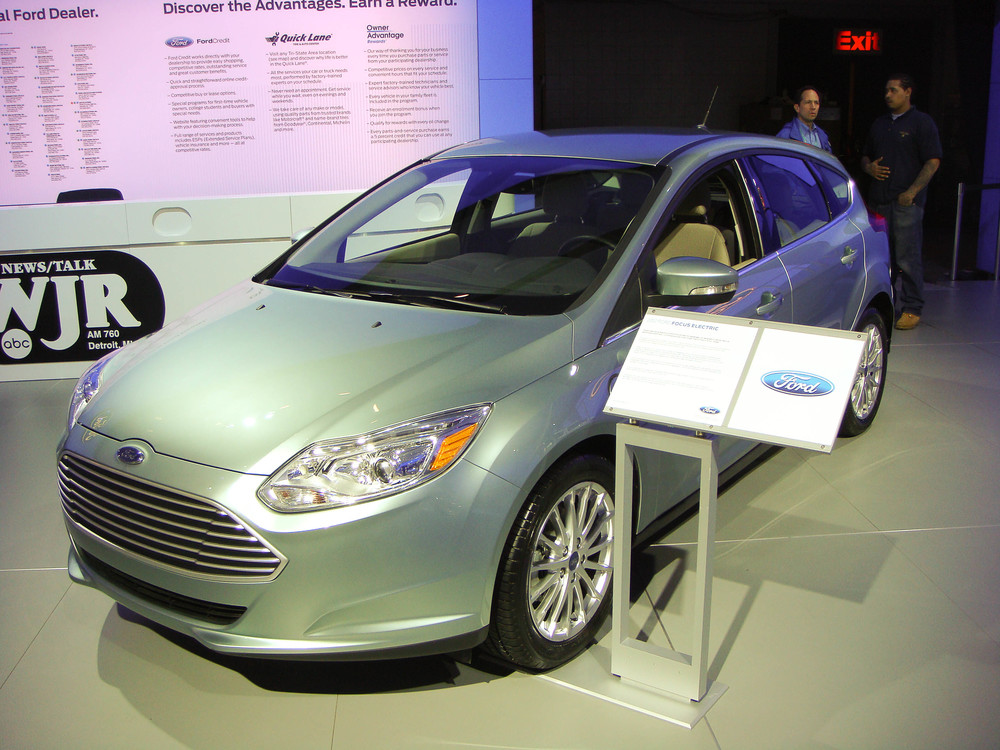
The electric Focus. Please make it available, Ford.
So the US has finally gotten the global model of the Focus 5-door hatchback. How is it? Well, without having driven it, I can report that the Focus is closer to the concept of a four door sports car than it has ever been before. With a tight, swooping cockpit, soft touch materials in the dash and center stack, layers of technology, and very firm, Volvo-like leather seats available, the Focus feels like a premium car from the driver's or passenger's position. Less so for the rear passengers. The back seat is smaller this time around for the Focus. A six foot passenger like me would be very cramped. Rear passenger room was sacrificed for style, as the roofline drops beautifully into an egg-like rear section, with speared tailights and an available rear spoiler. Audio system is by Sony. The user interface is what Ford brands as MyTouch. It includes the latest generation of Microsoft Sync, now with video playback support and the ability to stream Pandora internet radio. Everything is fed through an 8 inch touchscreen that supports Sync, bluetooth phone piggybacking, navigation, a driver's log, car information center, and all in-car entertainment. Instrument illumination appears to be LED, and a digital display climate control is available. Very nice all around.
Engine wise, gone is the very good aluminum block EcoTech engine, which generated 140 horses. In is a new 2.0 liter, direct injection engine generating 155 horses, which consumes less fuel per mile. And coming soon is a 1.6L EcoBoost turbocharged power plant, which will produce 200HP in a future, rally inspired ST model. I like the Japanese philospohy of a front wheel drive car not generating more than 170HP, but 200HP, if balanced and throttled correctly, might be a blast in the Focus ST.
Suspension is the expected MacPherson in the front and multilink in the rear, with a stiff stabilizer bar and firm springs. Much like my Hyundai Elantra Touring, the Focus has fuel saving electric power steering. But unlike my Touring, the Focus gets a six speed automatic, dual clutch transmission, making it even more fuel efficient. A Focus Platinum (the primium model right now), with all the electronics options, leather heated seats, sunroof, and the standard 2.0L engine and six speed automatic, should get about 24MPG in the city and 34MPG on the highway. If the customer drops an extra $2,000 for the SFE powertrain, then 38-40MPG on the highway is obtainable. But we should focus on the non SFE models (pun intended), since those are the models that will sell the most.
So comparing the new Focus to my 2009 Elantra Touring, I would say that it has no advantage in terms of steering and suspension. Both are identical and fun to throw into turns. But the Focus is lighter, has 17 more horses, and probably squeezes one or two extra miles per gallon. The Elantra beats the Focus for interior comfort, as it has a longer wheelbase, a smoother ride, and about double the amount of rear legroom. And the Elantra Touring qualifies as a rally car, since it has wheels pushed to the corners, and the turbodiesel verion has been driven in the Targa Tasmania rally down under the past two years.
If the Focus chassis is anything like its Peugeot and Citroen competitors, then it should be a thrilling ride. Hopefully, I can drive one soon and give a driving impressions review.
Now onto another four door sports car that might be in danger of losing that title, the fourth generation Subaru Impreza hatchback.
I would argue that the Impreza and BMW 3 series are the two greatest four door sports cars ever sold in the US (Audi A4, Mitsubishi Lancer, BMW 5 series, Porsche Panamera and Maserati Quadraporte fans will certainly disagree). Consider that the Impreza never became a midsize car. It did grow from subcompact to compact size, like the BMW 3 series. But the Impreza's basic formula never changed. It always was a lightweight, 4 or 5 door car with all wheel drive, independent suspension, a very low center of gravity, and a flat four (boxer) engine - not too dissimilar to what used to power early BMWs or Porsches.
From its introduction in 1992, the Impreza has been a contender on the rally circuits and the streets. It's a favorite of the tuner crowd in cities, as well as left of center folks in New England. It's a rare automobile that somehow took the place of the Saab 900 as the ultimate "Liberal's" car (perhaps the Forester is even more so). Driving an Impreza was and is an act of rebellion. It's a cult car. And it's a car that, again, like the BMW 3 series, has demonstrated the evolution and refinement of a successful automobile platform.
Here are some of the Impreza's greatest hits.
The 1992 US TV commercial staring a young, adorable Jeremy Davies:
A fully tuned, second generation Impreza WRX STi beating a Lamborghini in a European urban drag race:
The infamous crash of Alec Osenbach behind the wheel of a tuned, 350HP Impreza WRX at over 140MPH at the first annual Subifest in 2006. Amazingly, his injuries were minor:
US rally car driver Ken Block successfully jumps an Impreza rally car 170 feet.
Subaru introduces the third generation Impreza (2007-2012) with a jab at Volkswagen:
And the crowning stunt for the third generation Impreza, Travis Pastrana successfully jumps a rally spec car 269 feet in Long Beach, CA:
I like the third generation Impreza. I like the LED taillights and the four wheel wishbone suspension (unheard of in a car of that size and price). The STi Spec C is a triumph. I love the 2.5L boxer engine, the most successful engine in Subaru's history.
However, the enthusiasts and auto press was very clear about this Impreza - it's chassis had fallen behind to the Mitsubishi Lancer in terms of handling, character, and weight distribution. The stock Impreza 2.5i weighed in at 3,100 pounds. Also, the DVD navigation offered in the current car, from what I understand, is sub optimal. Subaru reliability and safety has never been better. But something had to change.
And so, Subaru, which ran the two previous Impreza generations for six years each, had to cut the third generation short in its fifth year of sales. Call it an intervention.
At the 2011 New York International Auto Show almost prcisely four years after the debut of the third generation Impreza, Subaru unveiled the fourth generation sedan and hatchback. The new car can be summed up in one phrase: do over. Instead of making the car bigger, Subaru only lengthened the wheelbase and added crucial rear seat legroom. Instead of modifying the venerable 2.5L boxer engine, Subaru has given the next Impreza the smaller, more fuel efficient 2.0L boxer already being used in the European Forester. And it is an all new platform, weighing 200 pounds lighter, at 2,900 pounds. If there's anything enthusiasts want more, it's a stock Impreza that weighs less than 3,000 pounds.
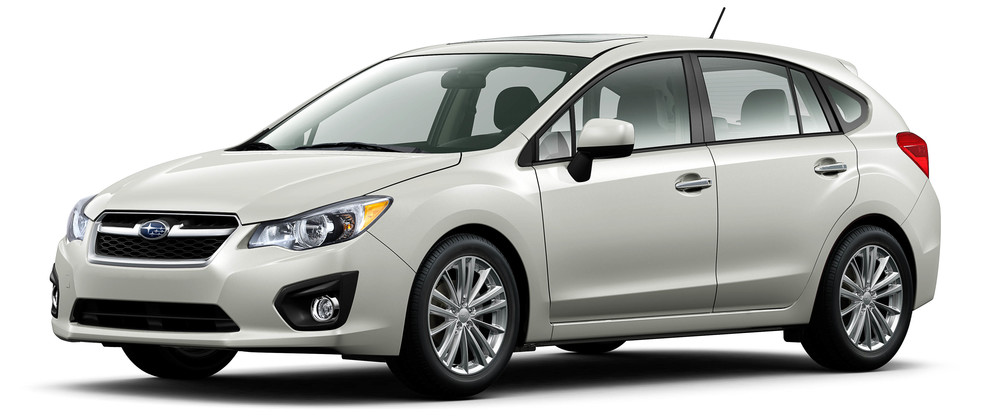
The first thing most Impreza fans will notice is the sub-A pillar on the front doors. This was added to increase visibility in turns and to lengthen the front doors. It's a feature we have seen on a few new cars lately, namely the Honda Fit, Honda Civic, and second and third generation Toyota Prius. When I see that triangle of glass, I immidatey think 'family car.' But now that I've had over a week to admire the new Impreza, it is actually growing on me. It helps the car look longer than it actually is. And the front fascia is one of the best Subaru has designed in a long time (the best since the Dr. Zapatnas facelift, I think).
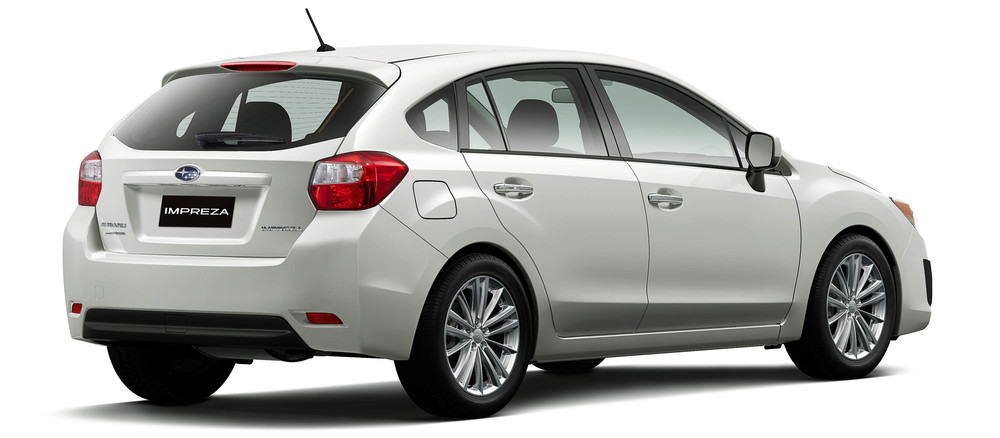
From the rear, the new Impreza has a bit of a Toyota Matrix look [photo], with a big rear bumper piece that adds utility, and can also be swapped out for a different design in the future should Subaru desire it. The rear doors have a sub-C pillar that complement the front door design. The fender flares are muscular and modern. And the car combines nice angles and seams in an attractive egg-like shape. I'm liking this new design.
So while there won't be any driving reviews published for a while, we do know a few appealing aspects. It's lighter. It has a smaller boxer engine, that finally features a timing chain instead of a timing belt. It gets 30% better fuel economy, while retaining a wonderful part-time all wheel drive system. Tall adults can now fit into the back seat. And Subaru has partnered with Harmon Kardon to improve the audio system and (hopefully) factory navigation system. The guages are still trademark Impreza orange-red. And the car is winterized, as always, with wiper deicers, heated side mirrors, and heated seats, all of which should be standard on the 2.0i Premium model. And the price will be about $50 more. So this 5-door, with navigation, bluetooth, and satelitte radio, should come delivered around the $23K mark.
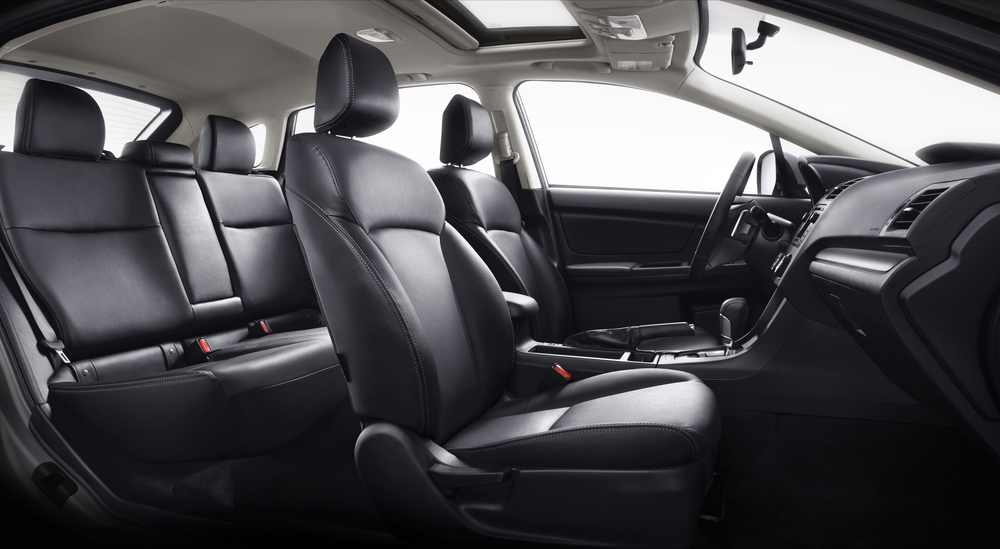
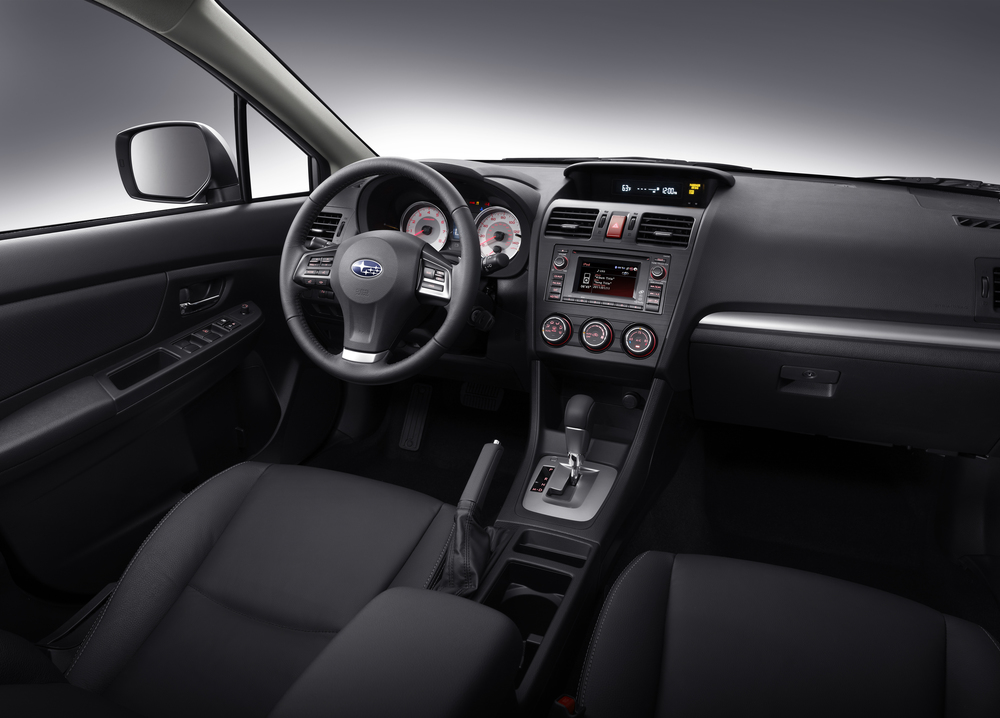
Subaru knows that it can't keep the Impreza a cult car forever. Subaru was the only auto brand in the USA besides Ford and Hyundai to see a record sales increase in 2010. The Impreza has to compete against the Hyundai Elantra and Ford Focus. I'll return to this car later with a review of whether or not it delivers the classic Impreza feel and fun factor to a potentially larger market. Subie owners really love their cars. Subaru wants millions more to join their club.